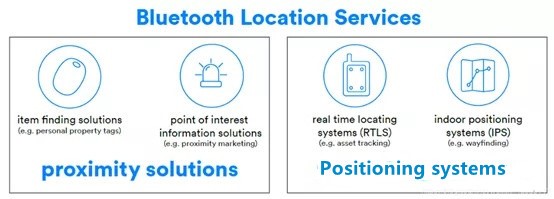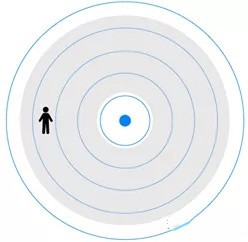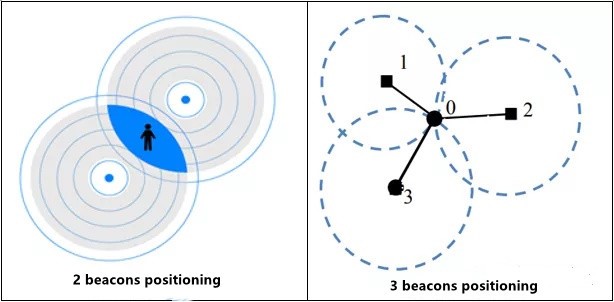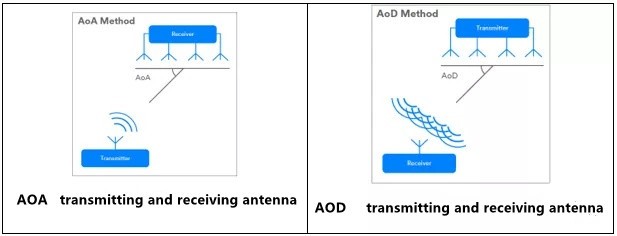Bluetooth provides two types of location services: proximity solutions and positioning systems.
Proximity solutions include point of interest information solutions(POI) and Item Finding Solutions(IFS)
Positioning systems include Real-time Locating Systems(RTLS)and Indoor Positioning Systems(IPS).

POL(point of interest information solutions)?
This solution mainly work in musem,it means that each exhibit in the exhibition hall of the museum can display its own information. When visitors bring their smartphones, there must be corresponding APP on their phones, and they will automatically get the exhibits information when they pass through each exhibit.
IFS(Item Finding Solutions)
This function is used to find personal items, such as wallets, keys and other Bluetooth-enabled products that are lost. You can use this function to quickly locate their location at home.
RTLS(Real-timeLocating Systems)
Used in some factories or complex infrastructures to locate them, such as elevator positioning, worker positioning in the workshop, tracking of ultrasonic detectors, etc.
IPS(IndoorPositioning Systems)
This function is to find the way to guide tourists in shopping malls, airports and other places. The working principle of IPS and RTLS is opposite.
What is the Bluetooth beacon positioning technology and application?
In order to meet the needs of the positioning market, before the Bluetooth 5.1 standard, the Bluetooth beacon positioning technology was greatly applied. What needs to be explained here is that the Bluetooth beacon technology is not an official standard launched by Bluetooth SIG. It is a technology defined by major companies themselves. A typical representative is Apple's ibeacon technology.
The basic principle of the beacon technology is that the Bluetooth device broadcasts beacon signal processing regularly, and the receiver processes the signal and realizes ranging and positioning. The Beacon broadcast signal is transmitted on the broadcast channel (37, 38, 39). Two important applications of beacon technology are distance estimation and accurate positioning.
Distance estimation
Estimate the distance by calculating the changes in the Bluetooth terminal's transmit and receive signal strength (RSSI), as shown in the figure below.

The center of the circle in the picture is the Bluetooth beacon signal transmitter, and the portrait target is the beacon signal receiver. The receiver calculates the received signal strength (RSSI) and obtains the transmitted signal power according to the received beacon information.
Path loss = transmit power-receive power
The bluetooth signal path loss in the free space propagation loss calculation formula is as follows:
Path loss (dB) = 32.45 + 20lg(2.4e3) + 20lg(d)
In the above formula, 2.4e3 refers to the Bluetooth operating frequency 2.4e3MHz, and d is the transmission distance unit km. Therefore, the receiver can calculate the distance d based on the path loss. Due to non-free space transmission, the calculation result d needs to be corrected appropriately. This estimation method has low accuracy and is easily affected by external conditions.
Accurate positioning
The basic principle of positioning is to draw a circle to find the intersection according to the distance between the target to be positioned and multiple beacon transmitting devices.
In order to prepare to locate the location of the active target, at least 3 Bluetooth beacons are required to locate. If there are only two Bluetooth beacons in the lower left picture, then there are two intersection points between two circles on the same plane, that is, the two points are at the same distance, and it is impossible to determine which point it is. The lower right picture uses 3 Bluetooth beacons (beacon 1, 2, 3) to determine a point position (position 0) on the plane. Nevertheless, the positioning accuracy is still limited, with an error of about 1m.

Bluetooth BLE5.1— Direction Finding
In order to meet the market's strong demand for precise positioning services, the Bluetooth SIG organization launched the Bluetooth BLE 5.1 standard. The standard includes Direction Finding positioning accuracy up to centimeter level, and Bluetooth BLE 5.0 positioning accuracy is 1 to 10 meters. The direction finding function will be widely used in the field of Internet of Things, such as indoor navigation, fast finding bracelets, remote control boards and other scenarios.
Bluetooth BLE 5.1 provides two different positioning methods, "Angle of Arrival" (AoA) and "Angle of Departure" (AOD). The basic principle of the two methods is that the transmitter transmits a sine wave (single tone) signal, and the receiver receives the signal and calculates the phase. The AoA method requires the receiver to contain multiple antenna arrays, and the AoD method requires the transmitter to contain multiple antenna arrays, as shown in the figure below.
